Cape Scott and San Josef Bay, Vancouver Island: A Pristine Wilderness Adventure
If you are looking for a truly remote area of Vancouver Island, Cape Scott Provincial Park is it!
Cape Scott offers a rugged coastal wilderness and beautiful unspoiled beaches. The fact that it's quite an adventure to get to makes it an alluring destination for many.
Quick Facts
- Features: White sand beaches; Remote access; Sea stacks and caves; wilderness camping
- Trail Length: There is a variety of lengths to choose from; San Josef Bay is 2.5 km (one way) and the most family-friendly
- Elevation Gain: Varies
- Hazards: Remoteness; No cell coverage; Wildlife, especially bears and wolves; Challenging trails
- Difficulty of Trails: Easy to difficult, depending on the trail chosen
- Suitability: See below
- Bike Trails: No
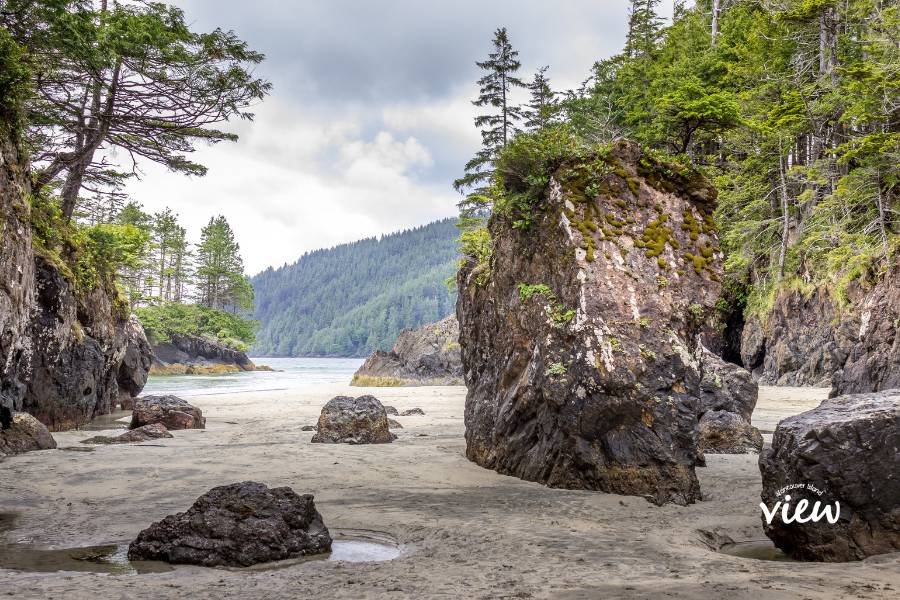
A Bit of History
Heavy rainfalls and violent windstorms made the area inhospitable for settlement despite two historical attempts. Danes from the Midwestern US made the first white settlement attempt during 1897 – 1907. They tried establishing an ethnic community around what is now known as Hansen Lagoon and Fisherman Bay.
The government agreed to build a road from Fisherman Bay to the San Josef River to make transporting goods more accessible. However, the road was never put in, and eventually, the colony struggled to survive on their limited resources.
1913 saw another wave of settlers, many of whom established themselves in the homes abandoned by the Danes. This colony was extremely short-lived, lasting only four years, due to the same hardships the Danes experienced and the First World War conscription.
Before white settlement, the Tlatlasikwala, Nakumgilisala and Yutlinuk shared the Cape Scott area. Today, the people are known collectively as the Nahwitti, and three of their six reserves are located within the boundaries of Cape Scott Provincial Park.
Cape Scott's name comes from honouring David Scott, a Bombay merchant who was one of the principal backers of a trading voyage to the area in 1786.
The Provincial Park was established in 1973 and includes 115 kilometres of scenic ocean frontage, including approximately 30 kilometres of stunning beaches.

Features of Cape Scott Provincial Park
This is a walk-in park, and the one parking lot is only accessible via a very long drive down a rough logging road. However, if you are up for the adventure, you will have access to pristine rainforests, majestic beaches and unspoiled nature.
One of the area's unique features is the sea stacks and sea caves, which can be accessed during low tide.
The park also has some huge old-growth trees, including a Sitka Spruce and Western Cedar, both over 3 meters in diameter. These can be seen on the trail to San Joseph Bay.
About 20 minutes north of the Eric Lake campsite, one can find a Sitka Spruce that measures more than 7 metres in diameter. Eric Lake is approximately 3 km from the trailhead.
However, the best part about Cape Scott is the beautiful white-sand beaches.
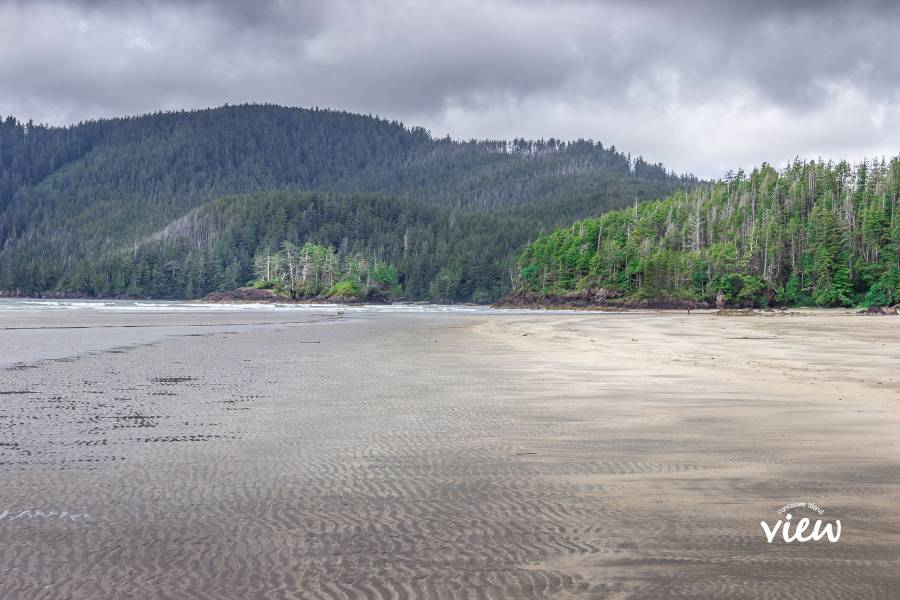
The Beaches (and Hikes)
The trails within the park are well marked and include the km to each beach/camping location. Accessing the majority of the beaches requires a multi-day backpacking adventure. You are in for a real treat if you are up for it.
Nels Bight is the most impressive of these beaches, stretching over 2,400 metres long and 210 metres wide at low tide. This area is also a popular camping spot for hikers. Nels Bight is a 16.8 km hike from the trailhead and accessed by hiking the Cape Scott Trail.
The other significant beaches in the area are as follows: (Please note, the km's mentioned are from the trailhead and one way only.)
- Guise Bay – 20.7 km hike
- Experiment Bight: 18.9 km hike
- Nissen Bight: 15 km hike
- Lowrie Bay – 10 km hike
- San Josef Bay – 2.5 km hike (this takes you to First Beach; Second Beach is further still)
Use an app like AllTrails to help guide you. (Please note that there is no cell coverage, so you must download the maps beforehand. This is an AllTrails+ feature).
Bucket List Hiking at Cape Scott Provincial Park
The hikes mentioned above (other than San Josef Bay) can be extremely muddy and difficult to traverse. Tackling most of Cape Scott's trails is not recommended unless you have previous backpacking experience. Visitors should also be well-equipped for wet weather.
For those up for the challenge, the Cape Scott and North Coast trails have been cited as one of the best coastal hikes anywhere in the world. It's the ultimate bucket list for backpackers. As the West Coast Trail has become more popular and ultimately more accessible for even the novice hiker, Cape Scott has become the new great challenge.
If interested, here is an excellent comparison of the West Coast Trail vs. the North Coast Trail.
San Josef Bay is the gem you're after for those who aren't into overnight backpacking treks and want something nice and easy.
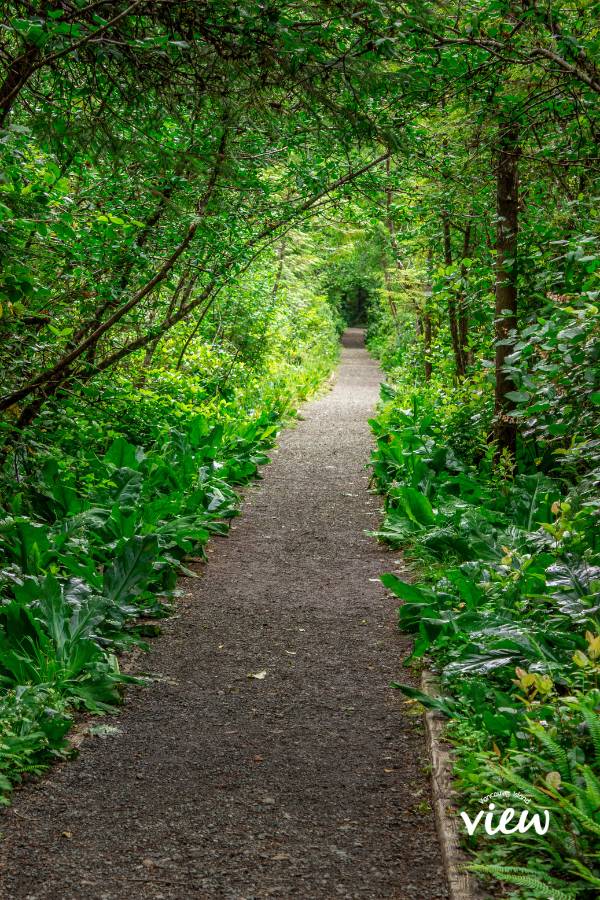
San Josef Bay
With an average one-way hiking time of 45 minutes (2.5 km), San Josef Bay is the easiest and most accessible Cape Scott beach. The best part is you still get to experience a taste of Cape Scott's unique features without breaking much of a sweat!
The trail to San Josef Bay is very well maintained. I found this a bit shocking, considering the remoteness of the area. The path is easier to walk on than many I have been on locally. It's definitely family and stroller-friendly.
The only issue you may have with bringing a stroller on the San Josef Bay trail is on the beach itself. The sand is incredibly soft (and oh so lovely to walk on!).
At San Josef Bay, you can see the sea stacks and caves by walking to your far right at the beach. Please remember, though, the stacks are only accessible at low tide, so plan accordingly.
San Josef Bay Camping
You can tent on San Josef Bay, and many families do so, especially on weekends. Backcountry camping fees apply, and it's cash only at the self-registration booth located at the trailhead. Current rates are $10.00 per adult (16+) and $5 per child.
Self-registration vaults are located at the San Josef River boat launch and trailhead.
Insider Tip: Before leaving home, get your camping permit from the backcountry registration service.
Although this doesn't reserve a campsite, the system provides visitors the convenience of prepaying and not having to carry cash.
Camping at Cape Scott Provincial Park
Wilderness camping is allowed at Cape Scott Provincial Park. This means that you can camp on the beach, and BC Parks prefers you do so over camping in the forest.
There are also 11 designated camping pads at Eric Lake on a first-come-first-serve basis.
Things to note about camping at Cape Scott Provincial Park:
- The park has no facilities other than food caches and pit toilets. These are only provided at designated areas: San Josef, Eric Lake, Guise Bay, Nels Bight, and Nissen Bight.
- You must obey the Leave no Trace rule. This means you bring out everything you take in.
- Most importantly, you must leave the site in its natural state before you leave the park. This means that if you build a temporary shelter, it must be dismantled entirely before you leave.
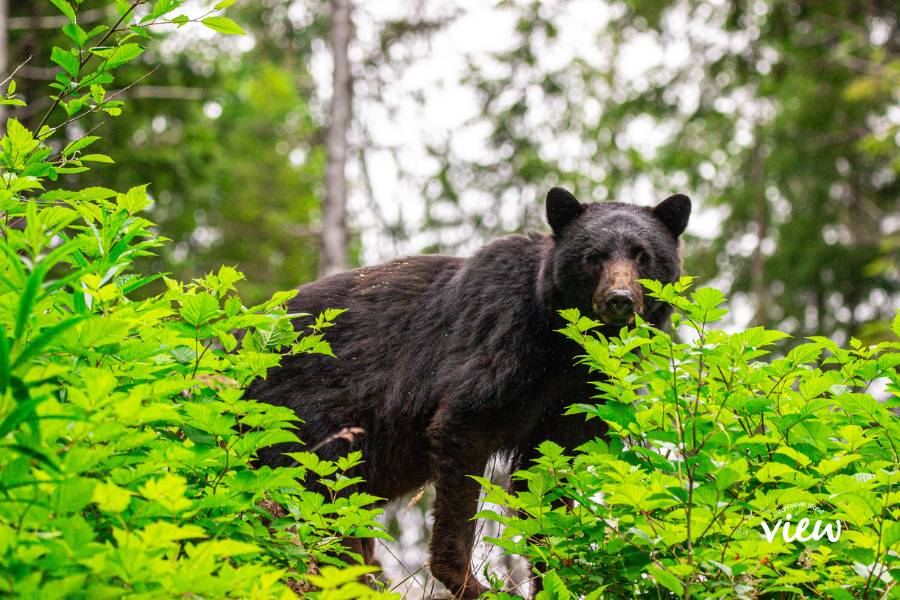
The Wildlife
This area is remote, so expect to see wildlife and be prepared. Bear encounters are especially common in the park.
A large black bear was across from our vehicle as we returned to the parking lot. Making loud noises was the key to getting it to retreat into the forest.
Wolves and cougars are also present in the area. Due to more frequent sightings of wolves in the park, dogs are only permitted in the San Josef Bay area and must be leashed at all times.
Centralized food caches are located at each camping area. It is highly recommended you use them if you plan to stay overnight. This way, you can hopefully avoid unwanted guests scrounging for food in the middle of the night.
Essentials
The trails can be extremely muddy. Bringing a pair of rubber boots might be a good idea, especially if you plan on hiking further than San Josef Bay. Proper hiking shoes are an absolute must! Expect rain. Rain storms can last several days and are unpredictable, so plan accordingly.
The links below are just to give you some ideas, but yes, the ones linked to Amazon are affiliates.
- A good tent – especially one with a waterproof fly
- Good quality sleeping bag
- Waterproof backpack
- Rain Gear
- Suitable firewood is scarce, so a portable camping stove is essential.
- Ensure you carry enough water to last at least two days. Water should be boiled, treated or filtered before consumption.
- A topographical map and/or compass
- Moleskin patches to help prevent blisters
- Small first aid kit and bug spray (especially one that covers ticks, too!)
- Dress in layers with lightweight and sun-protection clothing.
- Know the tide schedule!
- Cash for camping fee unless you pre-register as mentioned above.
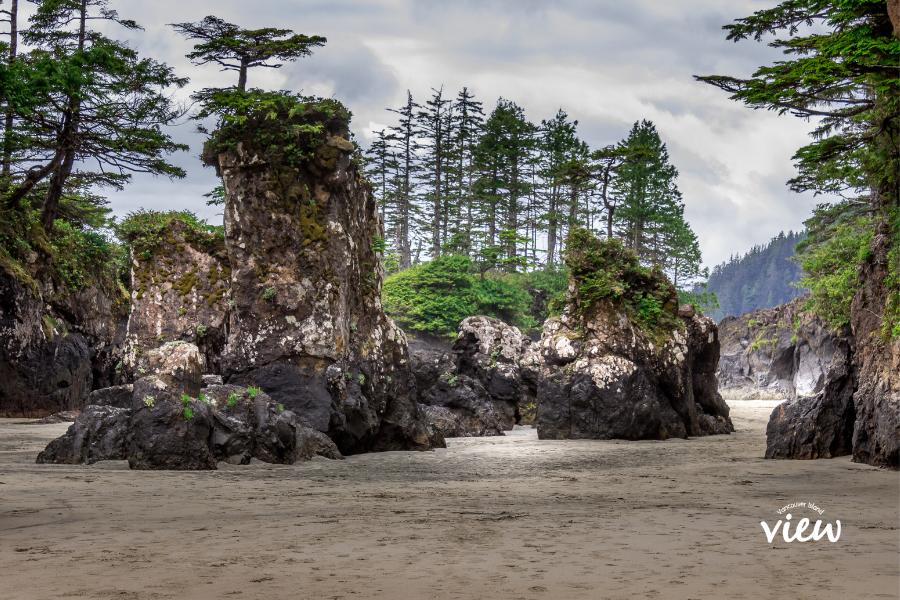
How to Get to Cape Scott Provincial Park
There is only one parking lot within the park. This lot is located 64 km west of Port Hardy and is accessed by travelling on active logging roads.
Before heading to Cape Scott, Port Hardy is a great spot to rest your head and/or stock up on needed supplies (snacks and gas!!). Although you drive right through Holberg (16 km from the trailhead), the small town has extremely limited amenities.
The drive from Port Hardy to Holberg, and ultimately the Cape Scott Provincial Park parking lot, is well marked. Just follow the signs. Travelling on logging roads is slow, so expect the drive to take approximately 2 hours from Port Hardy.
While driving on active logging roads, please remember that loaded logging trucks always get the right of way.
Cautions
We saw all types of vehicles travelling up and down the gravel road. However, we also saw a few flat tires or vehicles driving on a spare. The worst section of the road is between Holberg and Cape Scott Provincial Park. Although you will likely see other people on the road to help you if something happens, the area does not have cell coverage. So drive with extreme care!
The parking lot can become extremely busy. I was shocked at how many vehicles were in the lot when we arrived. So don't be surprised if you can't find a spot and need to park up the road (we had to do this).
Once parked, ensure nothing of value is left in the vehicle. It is also advised not to leave food either, as there have been cases where bears have broken in after smelling someone's lunch.
Driving Essentials
- Make sure your vehicle is full of gas before venturing from Port Hardy.
- Bring a spare tire (and know how to replace it if needed!).
- Most car rental companies do NOT allow driving on long gravel roads. If you plan on renting a vehicle, please ensure driving to Cape Scott is allowed in your contract. You don't want to be held responsible for the expensive fine if you get caught doing so without permission!!
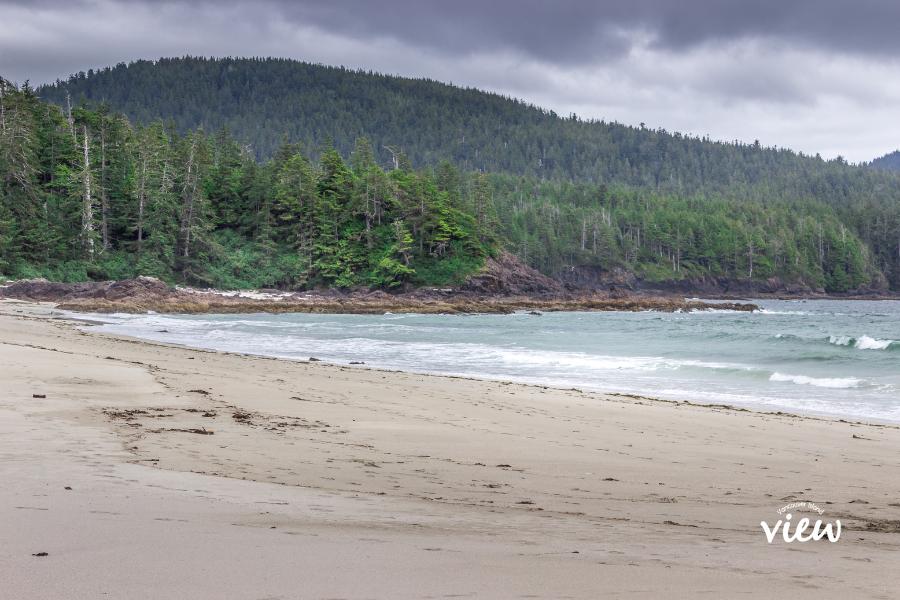
Other Areas of Interest
You've decided to make the trek out to Cape Scott. While you are already out that way, I recommend making a few extra stops. (Are you ever going to go again?? You may as well make the most of it!).
Holberg
If you have come from Cape Scott, especially after a significant hiking expedition, you might be craving hot food. The Scarlet Ibis Pub in Holberg will do the trick. They also have huts to rent if you feel too knackered to make the trek to Port Hardy.
The Holberg Store offers a variety of goods and services, including beer & wine, gas by the can, snack and beverage essentials, and even some souvenirs. There are also four rooms to rent if you want a place to crash. It's a neat little store to browse, and the owner is lovely, so make sure to put it on the list of places to stop.
Ronning's Garden
In 1910, Bernt Ronning carved a five-acre parcel of land out of the rainforest for use as an exotic garden. It features fascinating plants brought by the original owner from around the world, including bamboo and Monkey Puzzle trees – one of which is said to be the tallest recorded in North America. Today, a small group of volunteers tend to the property.
You'll see the sign for Ronning's Garden on your right-hand side between Holberg and Cape Scott Provincial Park.
Grant Bay
For a less populated white-sand beach, head to Grant Bay. This beautiful large beach is only a 5 – 10 minute walk from the trailhead on a relatively well-maintained trail. And the hike is through a beautiful old-growth forest full of large trees.
Winter Harbour
Vancouver Island's westernmost settlement is the historic fishing village of Winter Harbour. With a year-round population of 20, this small boardwalk community is charming. It's also a great spot to see sea otters!
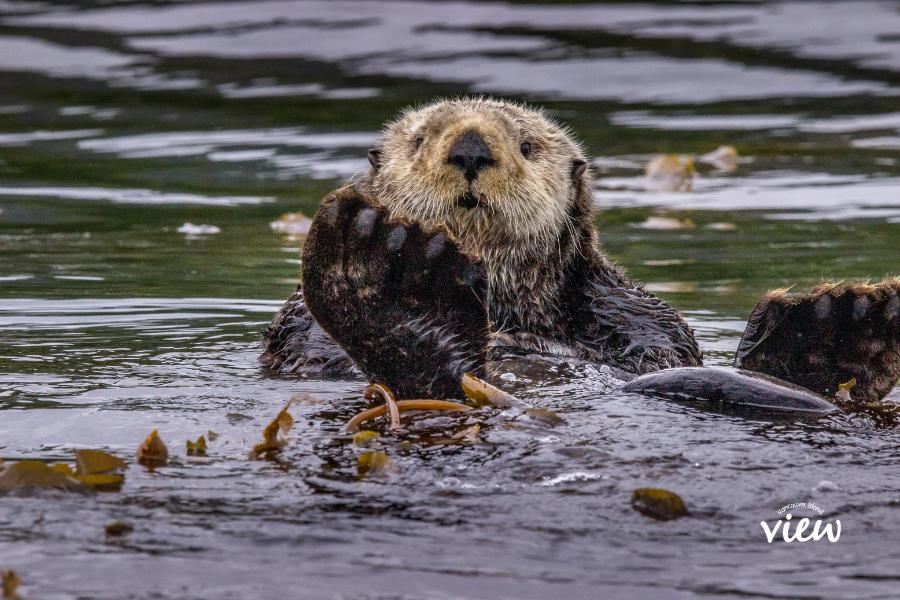
Wrapping up Why you Should Visit Cape Scott
In conclusion, Cape Scott Provincial Park beckons as an unparalleled destination for those yearning to escape the ordinary and embrace the extraordinary. This haven of untouched wilderness promises an immersive adventure like no other.
Cape Scott caters to the adventurer's soul, from the challenging trails that test the spirit of exploration to the high probability of encountering wildlife. Photographers will find a visual feast, capturing the ever-changing landscapes that tell stories of nature's grandeur.
Beyond the physical journey, Cape Scott offers a chance to disconnect from the digital noise, allowing visitors to reconnect with the essence of travel and the beauty of the present moment. For those seeking authentic, experiential travel, this park encapsulates the very spirit of immersive exploration on Vancouver Island.
So, why should you visit Cape Scott Provincial Park? Because it's a sanctuary where nature reigns, adventure awaits, and the soul finds solace.
Have you been? If so, please comment below and tell us about your time there.
If you want to save this article for future use, please pin this image on Pinterest:
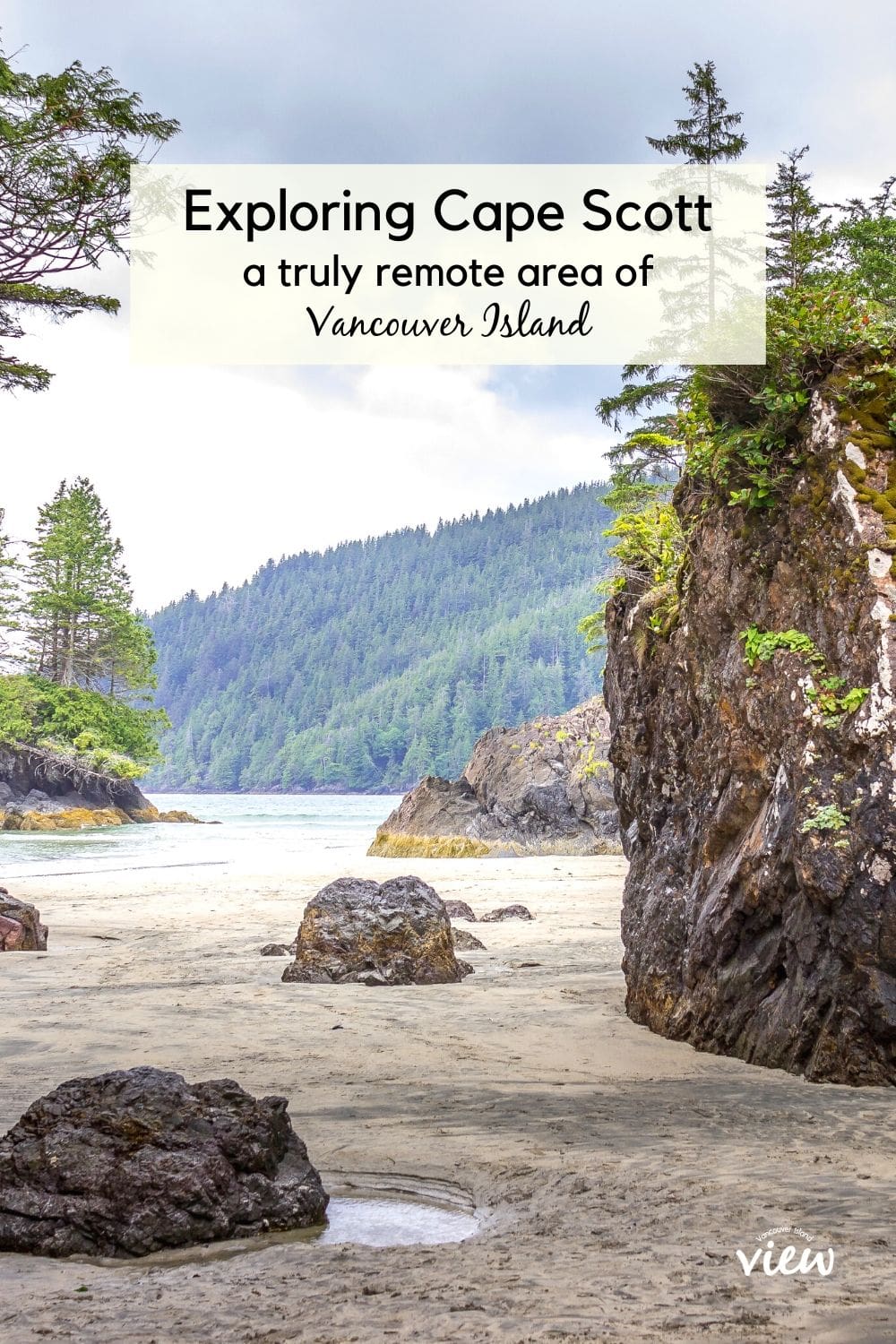
Subscribe Today!
Like what you are reading? Subscribe to our newsletter to learn more about the best ways to explore Vancouver Island.
If you want to see a sample of our newsletters before joining, you can check out the latest here: Archived Newsletters.

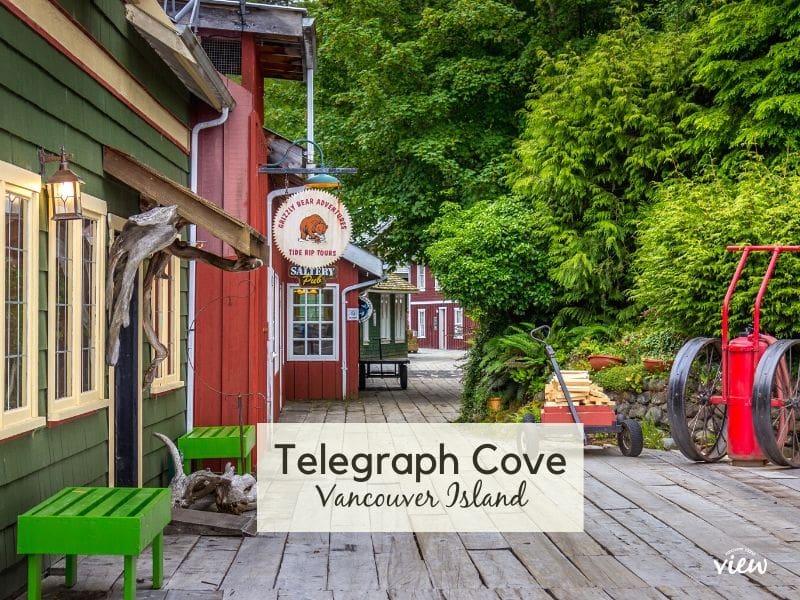
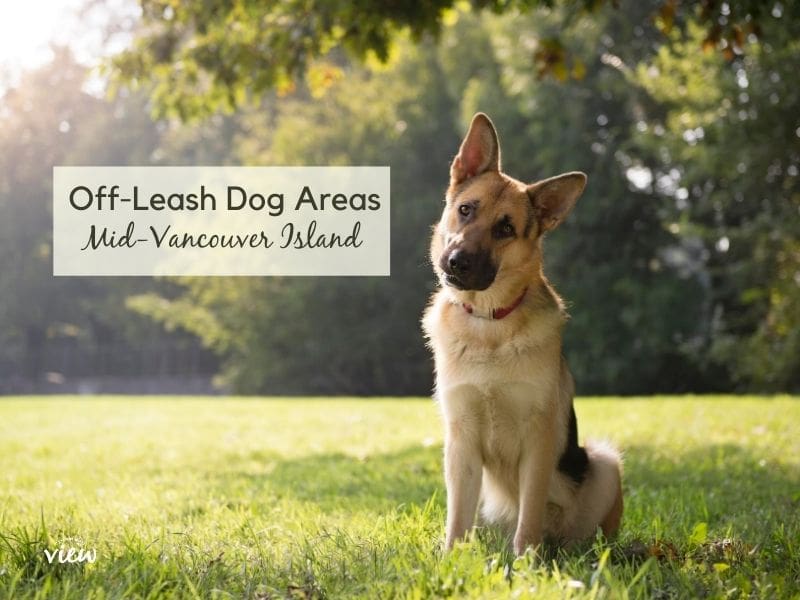




I have visited SJB a few times and ??somewhere?? I have written down what tide height is necessary to access the west side of the beach. Do you have that information please and thank you?
Hi Lynn, yes, the best time to view the sea stacks and sea caves is at a low tide. However, I don’t recall the exact number. Both times we’ve gone, we timed it around the lowest tide of the day and it worked perfectly.
Hi Kim! Thanks for the share – I operate a tour company in the area and visited SJ over 60 times this summer (2023) and wouldnt miss an opportunity to go more!! It offers a surreal experience that will live in memory for an eternity. If you ever needed and information shared or had any questions dont hesitate to reach out to Cove Adventure Tours based in Port Hardy, BC.
Adventures Calling!
Wonderful! Thank you for letting me know about your services!
You say winter harbor is the western most point of north America, do you mean Vancouver island? I assume somewhere in Alaska is the western most part of north America.
Oops! Wow, well that’s embarrasing. Thank you for that catch!
Love San Josef bay!! First time I went was around 1970. Last time I went was with my wife in 1980. We camped on the beach for four days and were the only ones on the entire beach! I remember a great little stream with a pool on the beach at the West end. There is a high tide trail if you arrive at high tide but arriving at low tide is much easier. Enjoyed the article. Must get back to San Jo!
Thank you for your comment. If you haven’t been since 1980, I am sure there will be some significant changes, with the biggest one being how busy it is now! However, it’s still a beautiful spot to explore.
Super useful post! Thank you. I am curious if you know roughly at what point are the caves accessible as the level of low tide changes. Is there a bit of time (and water level) on each side of low tide? Cheers.
Eek, I’m sorry, I don’t have that information, for It all depends on how high the tide is on any given day.
I’m wondering if San Josef Bay is accessible with a motorhome?
For the average person, I’m inclined to say it’s likely not a good idea. And most definitely not if it’s a rental RV (in the contract it would say no gravel roads, anyway). However, if you have experience travelling on long gravel roads with your motorhome, and you are fine with everything rattling around inside for 40+ km even when going extremely slow, then go for it!
Hi. Fantastic info and recommendations! I JUST visited last week and it was absolutely stunning. I have an off-road 4Runner but the road wasn’t too bad at all. I think going slow in a regular car would be fine.
NOTE: In Holberg, there was a detour that made things a tiny bit confusing. You need to turn left BEFORE the detour sign, kind of like you’re going into the weigh station area. You cross a little bridge and then it all makes sense.
I saw a couple of people on mountain bikes and slowed down when approaching them but I wouldn’t wish that dust on anyone.
The parking lot was jam packed an hour or so before low tide (2:30 pm or so). I’d just say that you shouldn’t let the tide discourage you if it doesn’t fit your schedule. I’m sure the place is absolutely stunning even at high tide.
Thank you for your comment and extra information, Dave! I’m so glad to hear you enjoyed the area and that the info given here helped you plan your trip.
How accessible is the logging rode by mountain (gravel) bike in August?
Hmmm, I might not be the best person to ask, for I am not a mountain biker, but I personally wouldn’t attempt it. The logging road is over 60 km long and extremely rough! It’s also very active with logging trucks.
I see many of these comments are a couple of years old. Does anyone have current information about the road in to the trailhead for San Josef Bay? Thank you.
Although I haven’t been back this summer (yet), I’ve driven the road a few times over the years and it rarely changes. It’s always a rough logging road that requires extra attention while driving. It is, however, a well-used road- especially in the summer, which means many will have gone before you.
Kim I am going to Port Hardy and hopefully San Josef Bay on Oct. 1. Can I go to San Josef in my regular car? Also someone in the comments mentioned sleeping in their car – is that permissable in the parking lit? I am car camping. Thanks for any info.
Hi there, yes, we saw all types of vehicles along the gravel road to San Josef. However, as mentioned in the article you are out in the middle of nowhere, there is no cell coverage, and the road isn’t great (huge potholes and rough). So it is advisable to be prepared for anything. Spare tire, included! As for sleeping in your vehicle…I am not sure of that, sorry. I don’t recall seeing any signs that say you can’t, but again, I wasn’t really looking for them, so may have missed it entirely. Have an amazing time!!
Kim, thanks for all your information on San Josef and the area. We went 11 August. The road beyond Holberg was more potholes than road so our journey took 2 hours. Thank goodness for our all-wheel drive. The carpark was packed but plenty of room on the trail and beach. Great moody skies and we managed to see a black bear in the estuary digging for crabs. He was well away from us and concentrating on food!
I’m loving your newsletter. We’ve only been on the Island 18 months and it’s a wealth of information for us newbies.
Thank you, Carolynn! I am so glad you find the newsletters helpful. Yes, the road past Holberg is terrible. I think it’s wonderful that you’ve already explored some of the most remote areas of Vancouver Island, especially considering you are new to the island. I know many locals who have never been further north than Campbell River! Happy exploring to you!
Hi! Went up to Cape Scott Sunday 28June intending to stay 4 nights. Drive up in brilliant sunshine to car park, snagged last spot in crowded car park. Strolled down to San Josef, very nice, but unfortunately tide coming in. Slept in car ready for next morning hike to Nels Bight. Woke up to sunshine again, commenced hike. Quite a few peeps and kids walking the trail. I think the young ones must float over all the water, mud holes, bits of logs used as stepping stones to get over mud holes. We got 6k, I had an old foot problem flare up, my partner hip pain. We decided to call it a day as still had 10k to go and getting slower. Some people we see going back said it was a good call. Went back to San Josef and set up tent, windy and miserable weather, which is the norm up there apparently. Packed up next morning, drive back. The mosquito bites we got took a week to heal lol! Would I go again, probably not. You are right, you defo need backpacking experience if doing the big hikes. . Plus take plenty of water. We virtually ran out, spoke to Ranger, she said water access on the other side of beach, tide in again so nit accessible.. I did see someone else on another site had been, they took photos of marine life etc. Cannot remember group name, something of VI.
I do like reading your page, I am fairly new to VI, 5 years August, and your observations are always good. Keep up the good work and thank you! 👍
Thank you, Linda, for sharing your experience with us!
We lived on the North Island (Port Hardy) for several years and one of our favourite adventures was to go to San Josef Bay. We did many trips to the area and visited every place mentioned in the above article. Our Island is majestic, beautiful and offers countless opportunities for adventure. Enjoy what we have, but let’s look after it!
Oh, you are so lucky to have visited San Josef Bay many times. And yes, we sure do live in a beautiful spot!